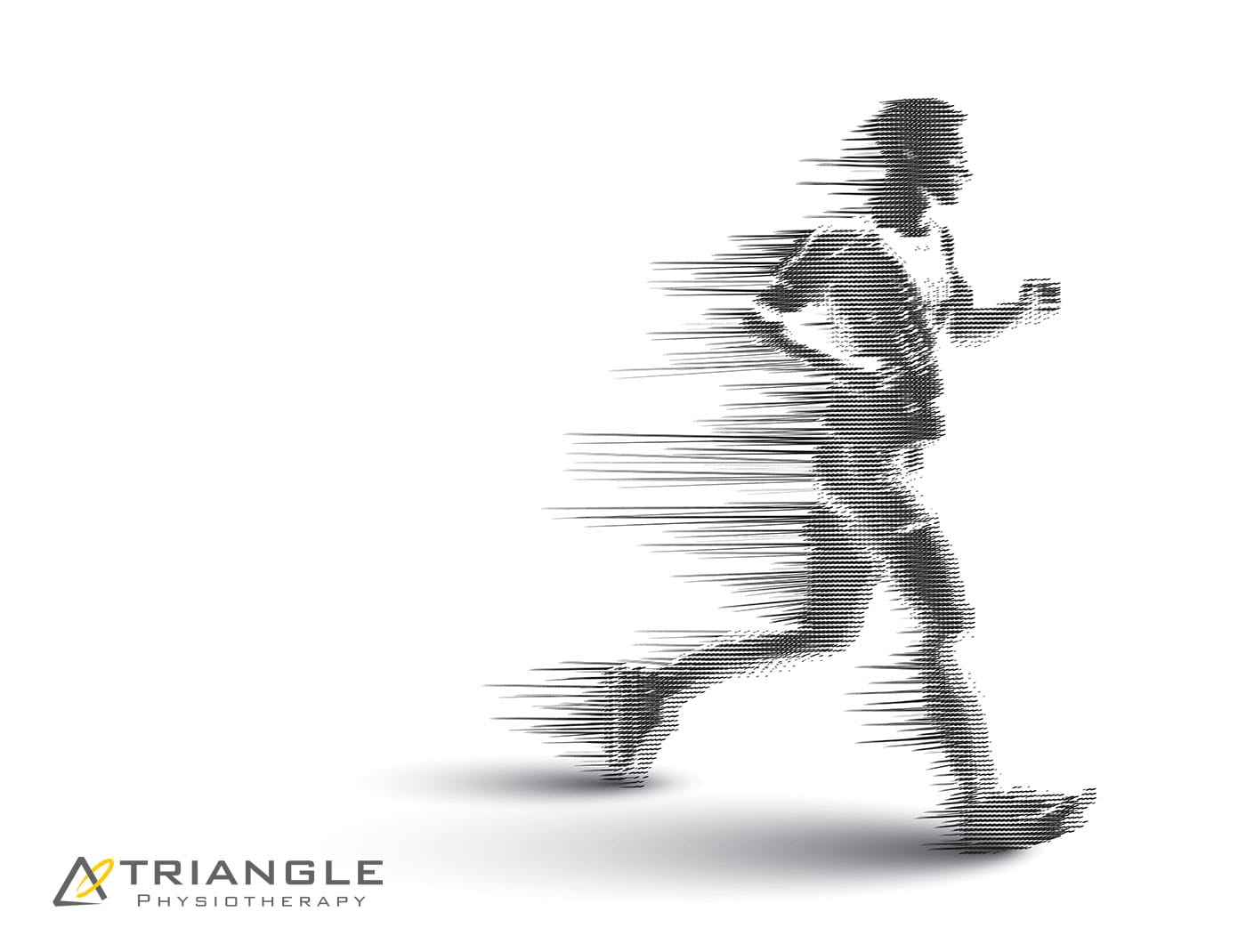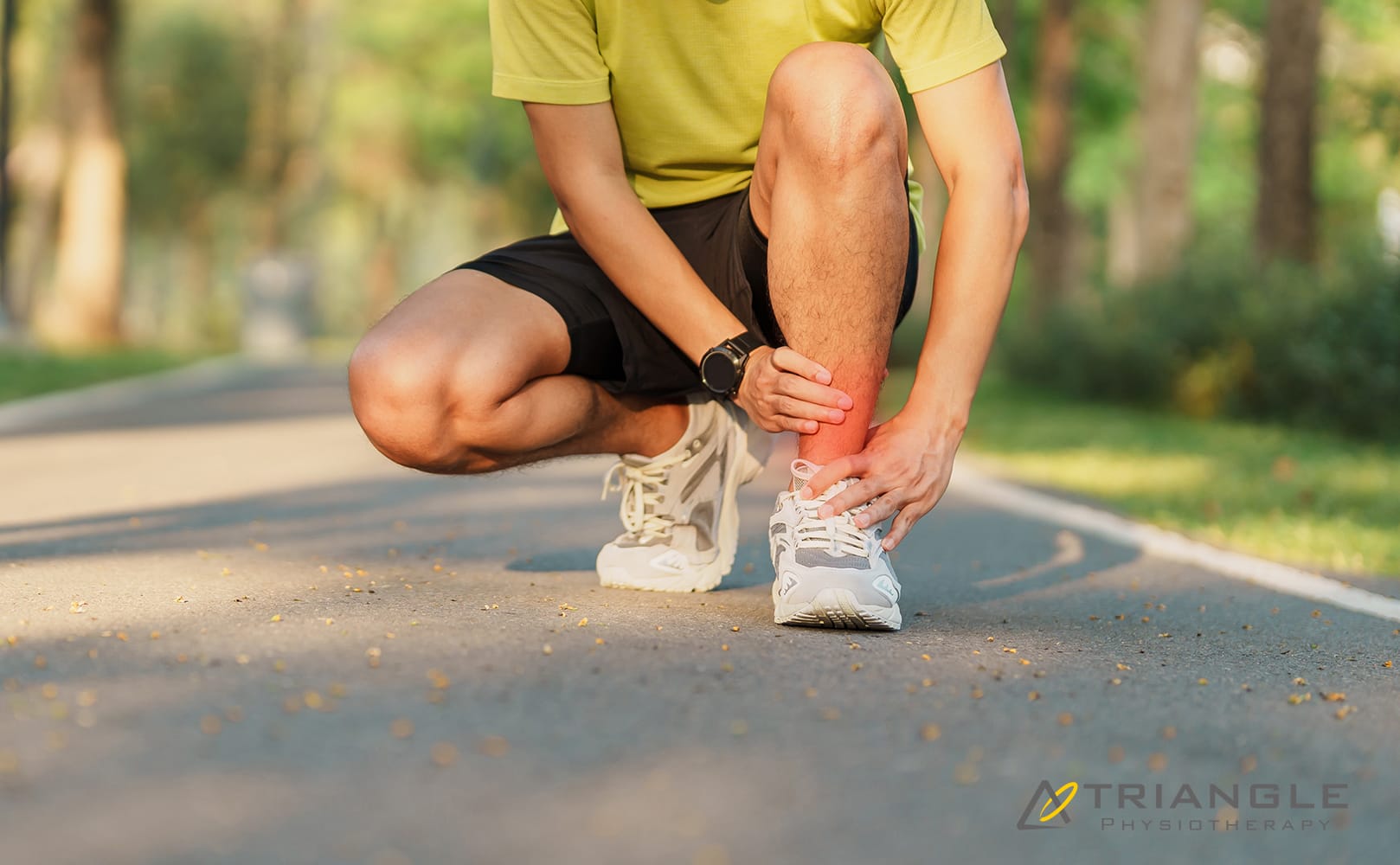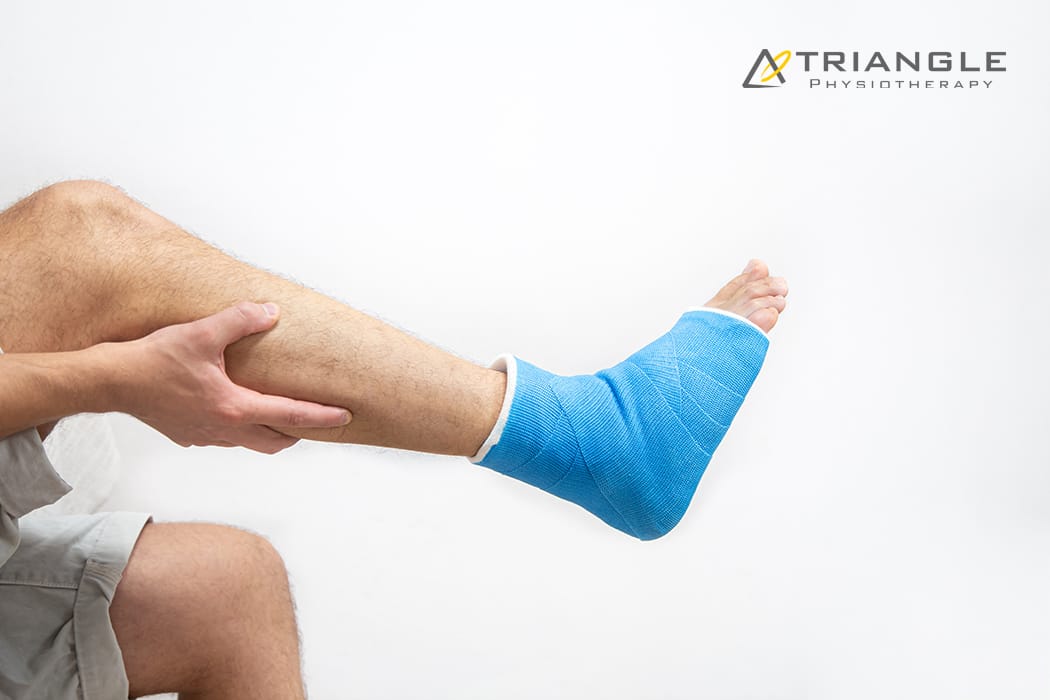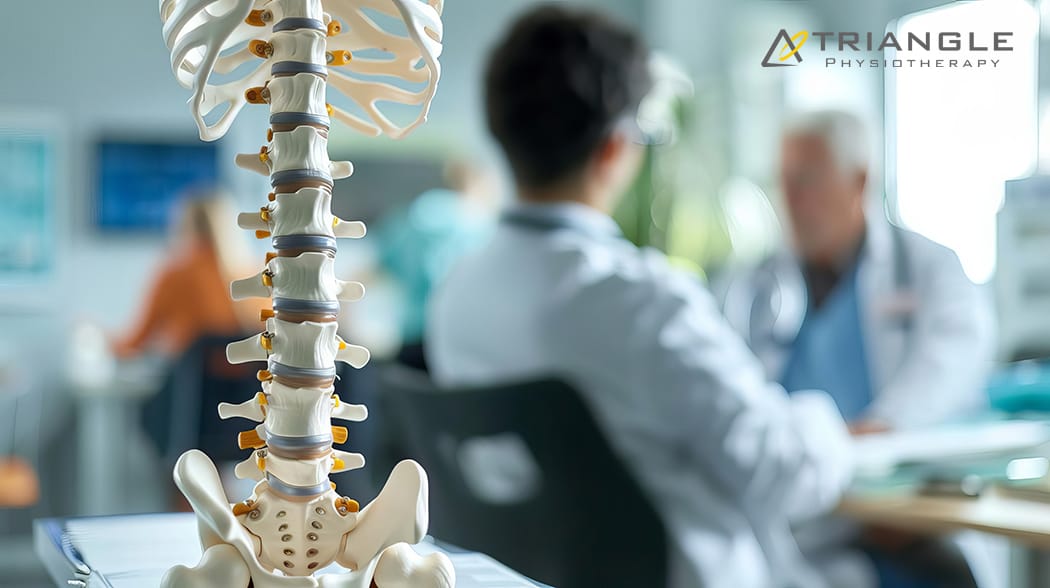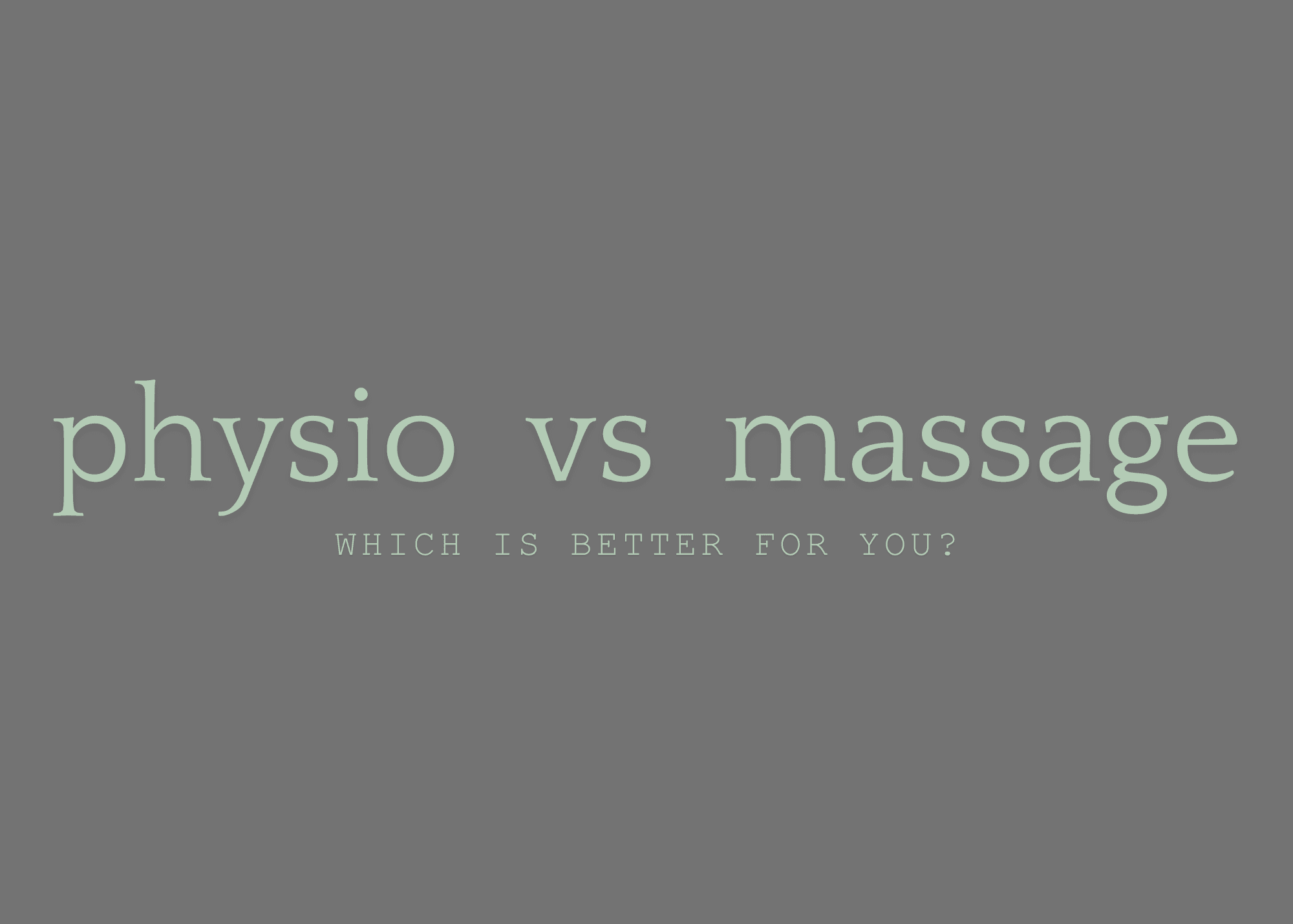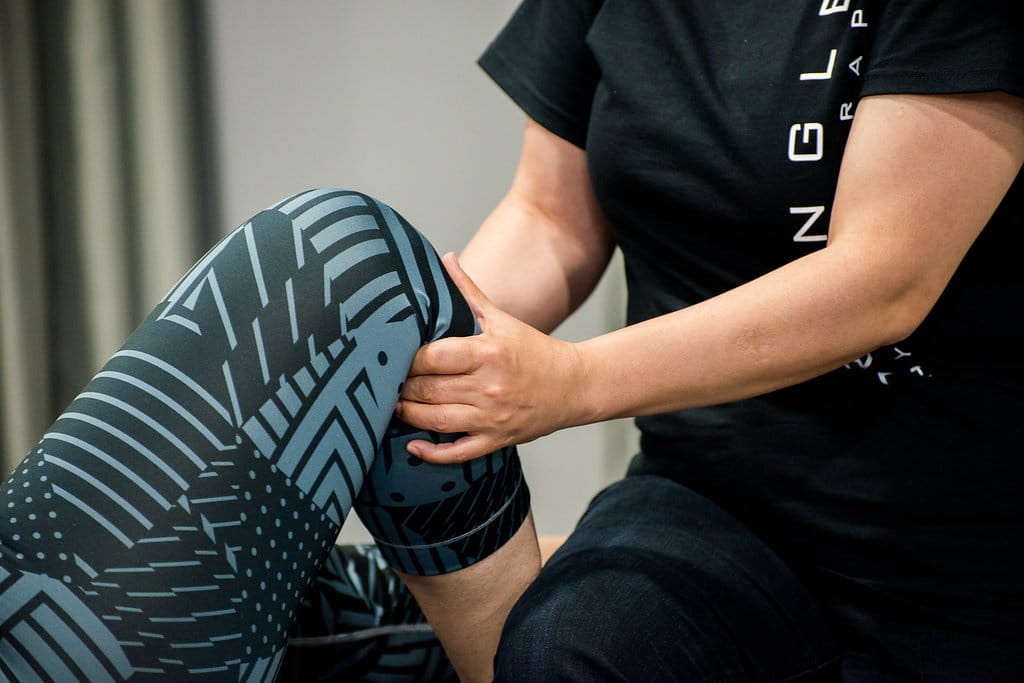Experiencing upper back pain while running can be both frustrating and concerning. While many runners focus on lower body injuries, upper back pain is a common issue that can affect performance and enjoyment. Understanding the causes of this discomfort and exploring effective solutions is essential for maintaining a healthy running routine.
At Triangle Physiotherapy, our team of physiotherapists have the expertise and education to help you develop a plan to ensure your runs are done right!
Understanding Upper Back Pain
Upper back pain during running can arise from various factors, including muscle strain, poor posture, or underlying conditions. The upper back, or thoracic region, comprises the spine and surrounding muscles, which play a crucial role in maintaining proper running form. If any part of this system is compromised, it can lead to discomfort and pain.

Common Causes of Upper Back Pain While Running
- Poor Posture: Runners who hunch their shoulders or lean forward excessively may put strain on their upper back muscles, leading to pain. Maintaining a neutral spine and relaxed shoulders is essential for proper running form.
- Muscle Imbalance: Weakness in the core or upper back muscles can result in poor stabilization during running. This imbalance may lead to overcompensation by other muscles, causing pain.
- Overuse: Increasing running distance or intensity too quickly can lead to muscle fatigue and strain in the upper back. It’s crucial to allow adequate recovery time between runs.
- Tension and Stress: Mental stress can lead to physical tension in the upper body, exacerbating discomfort during exercise. Runners may unconsciously tighten their shoulders and upper back while running, contributing to pain.
How can Physiotherapy help?
Physiotherapy can play a significant role in addressing upper back pain related to running. A physiotherapist will conduct a thorough assessment to identify the underlying causes of your discomfort. Based on this evaluation, they will develop a personalized treatment plan that may include:
- Postural Assessment: Evaluating your running posture and identifying areas for improvement can help alleviate strain on the upper back.
- Strengthening Exercises: Targeted exercises to strengthen the upper back and core muscles can improve stability and support proper running form.
- Stretching and Flexibility Training: Incorporating stretches for the upper back and shoulders can relieve tension and enhance flexibility.
- IMS: Intra muscular Stimulation is an effective tool to trace and treat the root cause, reducing recurrence.
- Education: Learning about proper running techniques and body mechanics can help prevent further injuries.
Tips for Reducing Upper Back Pain While Running
- Warm-Up Properly: Engage in a dynamic warm-up to prepare your muscles for running. Focus on movements that activate the upper back and shoulders.
- Focus on Form: Pay attention to your running posture. Keep your shoulders relaxed and your chest open, and avoid hunching over while you run.
- Strength Train: Incorporate strength training exercises targeting the upper back and core into your fitness routine to build muscle balance and support.
- Gradually Increase Intensity: Avoid sudden increases in running distance or intensity. Follow a structured training plan to prevent overuse injuries.
- Manage Stress: Practice stress-reduction techniques, such as mindfulness or yoga, to help relieve physical tension in the upper body.
FAQs
Why does my upper back hurt when I run?
Upper back pain while running can result from poor posture, muscle imbalances, overuse, or tension. Identifying the specific cause is essential for effective treatment.
What should I expect during my first visit to Triangle Physiotherapy?
During your initial visit, a physiotherapist will assess your posture, movement patterns, and any contributing factors to your pain. They will develop a personalized treatment plan to address your needs.
How many sessions will I need?
The number of sessions varies based on the severity of your pain and your response to treatment. Your physiotherapist will provide an estimate after your assessment.
Do I need a referral to see a physiotherapist?
No, you do not need a referral to access physiotherapy services. You can book an appointment directly, unless needed by insurance for billing purposes.
How soon can I expect to feel better?
Many individuals notice improvements within a few sessions, but the timeline can vary depending on individual circumstances and the nature of the pain.
How can I prevent upper back pain while running?
Focus on maintaining good posture, strengthening your upper back and core, warming up properly, and gradually increasing your running intensity to help prevent pain.
Call us today to get help with any running related back pain issues!
Upper back pain during running is a common issue that can hinder performance and enjoyment. By understanding the underlying causes and implementing effective strategies, you can alleviate discomfort and enhance your running experience. Book an appointment with us to get help!
Shoulder pain is a common issue that can affect anyone, whether you’re an athlete, a desk worker, or someone engaging in daily activities. Understanding the causes, prevention strategies, and effective treatments can help you manage this discomfort and improve your quality of life.
Thankfully, the physiotherapists and chiropractors at Triangle Physiotherapy are well-versed in diagnosing and treating shoulder conditions and also making sure you know what to do to prevent future recurrences.
Lets dive into a detailed look into shoulder pain!
Understanding Shoulder Pain
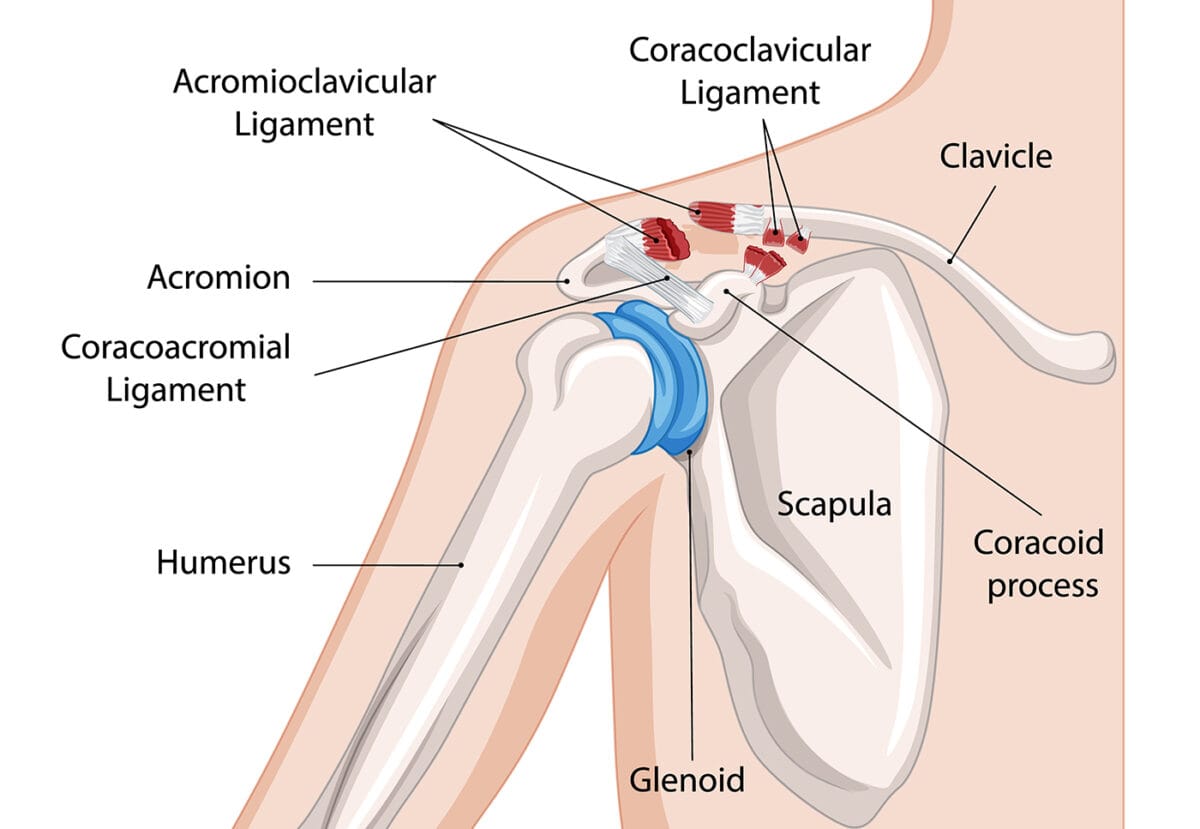
Shoulder pain can arise from a variety of sources, including injuries, overuse, and underlying medical conditions. Common causes include rotator cuff injuries, tendonitis, bursitis, arthritis, and referred pain from the neck or back. The shoulder is a complex joint with a wide range of motion, making it susceptible to strain and injury.
Prevention
Preventing shoulder pain involves proactive measures to protect your joints and maintain strength and flexibility. Here are some key strategies:
- Proper Posture: Maintain good posture while sitting and standing to reduce strain on your shoulders. Be mindful of your alignment, especially when using computers or mobile devices.
- Strength Training: Regularly engage in strength training exercises to support shoulder stability. Focus on the rotator cuff and shoulder blade muscles.
- Warm-Up Before Activity: Always warm up before engaging in sports or physical activities to prepare your muscles and joints.
Importance of Physiotherapy for Shoulder Pain
Physiotherapy is essential in diagnosing and treating shoulder pain. A physiotherapist can create a personalized treatment plan that includes exercises to strengthen the shoulder muscles, improve flexibility, and promote healing. They can also provide manual therapy and modalities like ultrasound or electrical stimulation to alleviate pain. Early intervention can prevent chronic issues and aid recovery.
Neuromuscular Exercises for Pain
Neuromuscular exercises focus on improving coordination and strength, which are crucial for shoulder health. Effective neuromuscular exercises for shoulder pain include:
- External Rotations: This exercise targets the rotator cuff, enhancing stability.
- Scapular Retractions: Strengthens the muscles around the shoulder blades, promoting better posture.
- Wall Angels: Improves shoulder mobility and encourages proper movement patterns.
Progressive Resistance Training
Incorporating progressive resistance training into your fitness routine can greatly benefit shoulder health. Gradually increasing the weights you lift helps build strength and endurance in the shoulder muscles. Focus on compound movements like overhead presses and rows, ensuring you maintain proper form to avoid further injury.
Incorporating Mobility into Your Daily Routine
Mobility exercises enhance flexibility and range of motion, crucial for preventing shoulder pain. Simple stretches like doorway stretches, cross-body arm stretches, and shoulder rolls can make a significant difference. Incorporate these stretches into your daily routine, perhaps during breaks or before bed, to keep your shoulders flexible and reduce tightness.
Tips for Safely Performing Exercises
Safety should always be your priority when exercising, especially if you’re dealing with shoulder pain. Here are some tips to keep in mind:
- Warm-Up: Always begin with a gentle warm-up to prepare your muscles.
- Listen to Your Body: If any movement causes pain, stop immediately and reassess.
- Use Proper Technique: Focus on form rather than weight to prevent injuries.
Consult Professionals: Work with a physiotherapist if you’re unsure about your exercises or recovering from an injury.
Shoulder pain can be a frustrating condition, but understanding its causes and implementing preventive measures can lead to relief. Always prioritize safety and seek professional guidance when needed. With the right approach, you can manage and reduce shoulder pain, allowing you to return to your favorite activities and enjoy a healthier lifestyle.
We understand that life can get busy but don’t forget to prioritize your health. Book an appointment to get that shoulder checked out at any one of our 8 locations.
Sources:
https://www.physio-pedia.com/Evidence_Based_Interventions_for_Shoulder_Pain
Sprains vs. strains? Understanding the difference between sprains and strains is crucial for anyone engaged in physical activities or sports. Both are common injuries, but they affect different parts of the body and require distinct approaches for treatment and prevention. Here’s a comprehensive look at sprains and strains, including their causes, prevention strategies, and more.
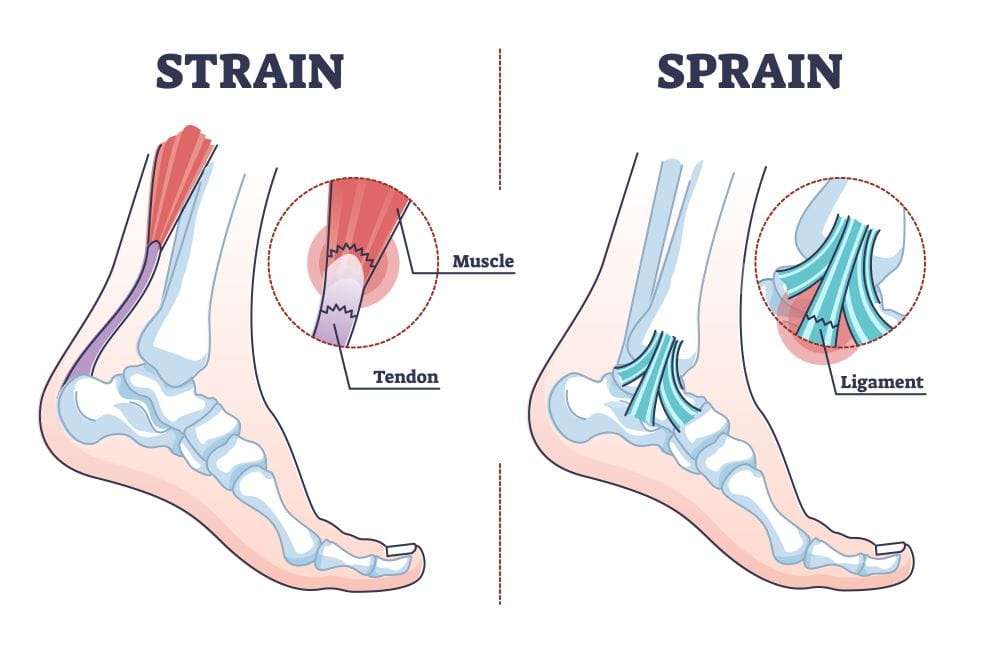
Picture Credit: Louisville Bones
Causes
Sprains occur when the ligaments, which are the tough bands of connective tissue that connect bones to each other, are stretched or torn. This usually happens due to a sudden twist or impact that forces a joint out of its normal range of motion. Common examples include rolling an ankle during a fall or twisting a knee while playing sports.
Strains, on the other hand, involve injuries to muscles or tendons, which connect muscles to bones. They are typically caused by overstretching or overusing a muscle, often due to sudden movements or lifting heavy objects improperly. Strains can happen during activities that require a lot of physical effort, such as running, lifting weights, or engaging in sports.
Prevention
Preventing sprains and strains starts with proper preparation and conditioning.
- For Sprains: Wearing appropriate footwear and using supportive gear during activities can help reduce the risk. Strengthening the muscles around the joints and improving balance through exercises can also be beneficial. Additionally, warming up properly before engaging in physical activities is crucial to prepare the ligaments for stress.
- For Strains: To prevent strains, it’s important to use proper techniques when lifting or performing strenuous activities. Regular strength training and flexibility exercises can help maintain muscle balance and reduce the risk of overstretching. Ensuring you are adequately warmed up before exercising can also protect against strains.
Progressive Resistance
Progressive resistance training involves gradually increasing the weight or resistance in exercises to build strength and endurance over time. This method is effective in preventing both sprains and strains by:
- For Sprains: Strengthening the muscles around the joints can provide better support and stability, reducing the likelihood of ligaments being stretched or torn.Practice ankle exercises using resistance bands
For Strains: Progressive resistance training helps in building muscle strength and resilience, which can prevent overstretching and muscle fatigue.Peform isolated movements that help with day to day resilience.
Neuromuscular Exercises
Neuromuscular exercises focus on improving the communication between the brain and muscles, enhancing coordination and stability. These exercises are particularly effective for:
- For Sprains: They help improve joint stability and balance, reducing the risk of accidents that might lead to sprains. Exercises such as balance training and proprioceptive drills can be beneficial. Use BOSU ball
- For Strains: Neuromuscular exercises enhance the control and responsiveness of muscles, reducing the chances of strains by improving movement patterns and muscle coordination. Allow it to rest, knowing when to rest is equally important.Drink plenty of water, and practice unilateral movements.Stretch the lower limbs.
Mobility Exercises
Mobility exercises aim to improve the range of motion and flexibility of joints and muscles. They are crucial for:
- For Sprains: Increasing joint mobility can help maintain a healthy range of motion, which can reduce the risk of injuries. Regular stretching and joint mobility exercises can keep ligaments and surrounding tissues flexible.
- For Strains: Enhancing muscle flexibility through mobility exercises can help prevent strains by allowing muscles to stretch properly without being overstretched. Incorporating dynamic stretches and functional movements can be beneficial. Go into deeper joint ROM.
Safety Tips
- Warm Up: Always start with a proper warm-up to prepare your muscles and ligaments for activity.
- Use Proper Techniques: Whether lifting weights or engaging in sports, ensure you use the correct techniques to avoid unnecessary strain.
- Listen to Your Body: Pay attention to any signs of discomfort or pain, and avoid pushing through it.
- Rest and Recover: Allow adequate time for rest and recovery to prevent overuse injuries.
If you suspect you have a sprain or a strain, give us a call or book an appointment to see one of our physiotherapists to get an assessment and treatment plan.
Click here to book an appointment with a physiotherapist at one of our eight locations.
- Physiotherapy Etobicoke – Triangle Physiotherapy Etobicoke
- Oakville Physiotherapy Clinic – Triangle Physiotherapy Oakville
- Physiotherapy North York – Triangle Physiotherapy North York
- Mississauga Physiotherapy Clinics – Triangle Physiotherapy Mississauga
- Downtown Physiotherapy Clinics – Triangle Physiotherapy King West
- Uptown Physiotherapy Clinics – Triangle Physiotherapy Lawrence Park
- Physiotherapy Clinic Downtown Toronto – Triangle Physiotherapy Queens Quay
- Physiotherapy Clinics Mississauga – Triangle Physiotherapy Erin Mills
Rotator cuff tears can be a challenging injuries, impacting your ability to perform everyday tasks and participate in activities you enjoy. The rotator cuff, a group of four muscles and their tendons located in the shoulder, is crucial for shoulder stability and movement. Physiotherapy plays a vital role in the recovery process, helping to alleviate pain, restore function, and prevent future injuries. In this guide, we’ll explore how physiotherapists can assist with a rotator cuff tear, including causes, prevention strategies, and various physiotherapy techniques.
Our physiotherapists in Toronto can help you with rotator cuff injuries and rehabilitation.
Causes of Rotator Cuff Tears
What It Is: The rotator cuff consists of four muscles—supraspinatus, infraspinatus, teres minor, and subscapularis (SITS) —that stabilize and move the shoulder joint. A tear in one or more of these tendons can disrupt shoulder function.
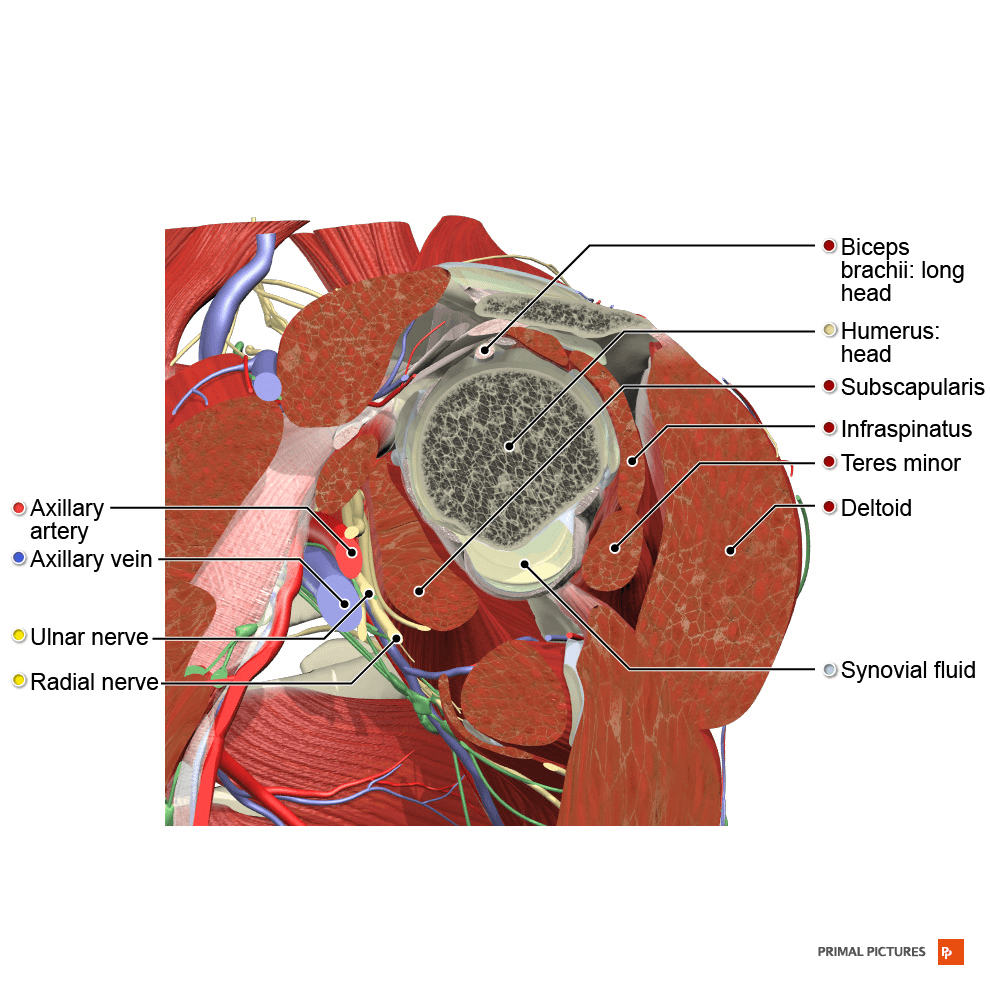
Common Causes:
- Overuse: Repetitive overhead motions, such as those performed in sports like baseball or tennis, can lead to gradual wear and tear.
- Acute Injury: A sudden fall or lifting a heavy object can cause an acute rotator cuff tear.
- Aging: As we age, the tendons can weaken and become more prone to tears due to decreased blood supply and collagen degeneration.
Prevention Strategies
How to Reduce Risk: Although some rotator cuff tears are unavoidable, implementing preventive measures can help minimize the risk.
- Strength Training: Strengthen the muscles around the shoulder, including the rotator cuff muscles, to support the joint and prevent strain.
- Proper Technique: Use correct form when performing overhead activities or lifting weights to reduce undue stress on the shoulder.
- Regular Stretching: Maintain flexibility in the shoulder and adjacent joints to prevent stiffness and improve the range of motion. For example, one tends to have tight chest muscles and weak back muscles, hence the shoulder overcompensates.
Resistance Exercises
Purpose: Resistance exercises help build strength in the rotator cuff and surrounding muscles, which is crucial for stabilizing the shoulder joint and aiding recovery.
Examples:
- External Rotations: Use a resistance band or light dumbbell to perform external rotation exercises, targeting the infraspinatus and teres minor.
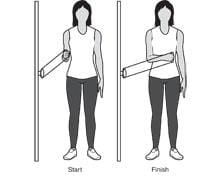
- Internal Rotations: Perform internal rotation exercises with a band or dumbbell to strengthen the subscapularis muscle.
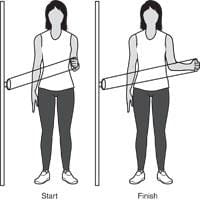
- Scapular Retractions: Strengthen the muscles between the shoulder blades to support overall shoulder function.
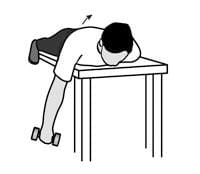
How to Do Them Safely: Start with low resistance and increase gradually as your strength improves. Focus on controlled movements to avoid further strain on the shoulder.
Neuromuscular Exercises
Purpose: Neuromuscular exercises enhance coordination and the communication between your brain and muscles, improving shoulder stability and function.
Examples:
- Shoulder Blade Squeezes: Squeeze your shoulder blades together to activate the muscles that stabilize the shoulder.
- Proprioceptive Training: Use a stability ball or balance board to improve proprioception and shoulder stability.
- Dynamic Movements: Incorporate exercises that involve dynamic shoulder movements to enhance neuromuscular control.
How to Do Them Safely: Start with basic exercises and progress to more challenging ones as your coordination and stability improve.
Progressive Exercises
Purpose: Progressive exercises are designed to gradually increase in difficulty, helping to build strength and endurance while avoiding overexertion.
Examples:
- Shoulder Press: Begin with light weights and gradually increase the load as your shoulder strength improves.
- Front Raises: Use light dumbbells to perform front raises, increasing the weight progressively.
- Side-Lying Abduction: Lift your arm while lying on your side to strengthen the shoulder muscles, starting with lighter resistance and increasing as tolerated.
How to Do Them Safely: Follow a structured program that gradually increases the intensity and complexity of exercises to prevent overuse injuries.
Stretching and Strengthening
Purpose: Stretching maintains flexibility and reduces stiffness, while strengthening exercises build muscle support necessary for shoulder stability.
Examples:
- Pendulum Exercises: Allow your arm to swing gently in circles to improve flexibility and reduce stiffness.
- Cross-Body Stretch: Stretch the shoulder by bringing one arm across your body and holding it with the opposite arm.
- Strengthening Exercises: Perform exercises like resisted shoulder external and internal rotations to build rotator cuff strength.
How to Do Them Safely: Stretch slowly and hold each stretch for 15-30 seconds. Ensure strengthening exercises are done with proper form and controlled movements.
Mobility Routine
Purpose: A mobility routine focuses on improving the range of motion and overall function of the shoulder joint.
Examples:
- Shoulder Circles: Perform gentle shoulder circles to increase flexibility and mobility.
- Wall Angels: Stand with your back against a wall and slowly move your arms up and down to improve shoulder movement.
- Towel Stretch: Hold a towel behind your back with both hands and gently pull to stretch the shoulder.
How to Do Them Safely: Perform exercises within a comfortable range of motion and avoid pushing through pain.
Tips for Safely Performing Activities
How to Stay Safe: As you recover and resume activities, following these tips can help prevent re-injury and ensure a safe return to your routine.
- Listen to Your Body: Pay attention to any pain or discomfort and modify your activities as needed.
- Gradual Return: Ease back into your regular activities and sports gradually to allow your shoulder to adjust.
- Use Proper Technique: Ensure you use correct techniques for overhead movements and lifting to prevent undue stress on your shoulder.
Seek Professional Guidance: Work with a physiotherapist to develop a personalized rehabilitation program and get advice on technique and progression.
Recovering from a rotator cuff tear involves a comprehensive approach that includes strength building, flexibility exercises, and proper mobility routines. By incorporating resistance and neuromuscular exercises, following a progressive exercise routine, and paying attention to your body’s signals, you can enhance your recovery and reduce the risk of future injuries. Remember, patience and consistency are key in your rehabilitation journey. With the right physiotherapy and preventive measures, you’ll be back to your favorite activities stronger and more resilient.Don’t let these physical conditions ever ride on you.
Click here to book an appointment with a physiotherapist in Toronto.
If you have had achilles tendon repair surgery or are scheduled for a procedure, you are likely going to need post-surgery rehabilitation to recover completely. It is also advisable to do physiotherapy pre-surgery to maximize the outcomes of the surgery. This is also known as prehab or pre-surgery rehab. At Triangle Physiotherapy, our physiotherapists are skilled and experienced at helping their patients reach their optimal level of recovery. If you’re looking for expert guidance in post-surgery rehab near you or post-operative physiotherapy in Toronto, you’ve come to the right place.
Achilles tendon injuries are common, particularly among athletes and active individuals. The Achilles tendon, the largest and strongest tendon in the body, connects the calf muscles to the heel bone, playing a crucial role in walking, running, and jumping. When this tendon is torn or ruptured, Achilles repair surgery is often necessary. However, surgery is only the first step toward recovery. Effective rehabilitation is essential for restoring function, strength, and mobility. In this blog, we’ll guide you through the stages of Achilles repair surgery rehab, providing insights and tips to ensure a successful recovery.
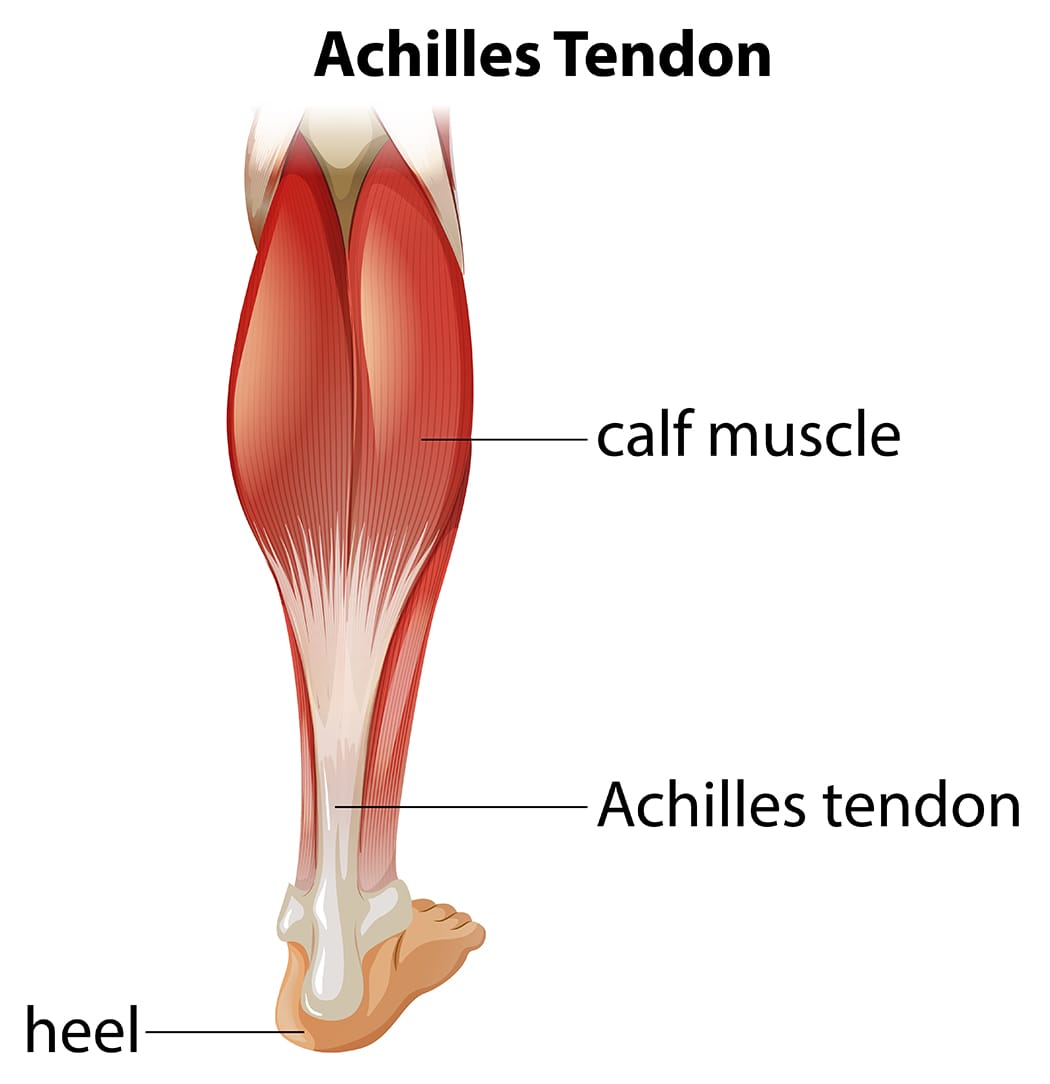
Understanding Achilles Tendon Injuries
What is the Achilles Tendon?
The Achilles tendon is a band of fibrous tissue that links the calf muscles to the heel bone. It enables activities that involve pushing off the foot, such as running and jumping.
Common Causes of Achilles Tendon Injuries
- Overuse: Repetitive stress from activities like running can lead to micro-tears.
- Sudden Increase in Activity: Rapid changes in activity levels can strain the tendon.
- Trauma: Direct impact or sudden, forceful movement can cause a rupture.
- Age and Degeneration: As people age, tendons become less flexible and more prone to injury.
Achilles Repair Surgery
Goals of Surgery
- Reattach the torn ends of the tendon.
- Restore the tendon’s length and tension.
- Enable the patient to return to their pre-injury level of activity.
Tips for a Successful Rehab
- Consistency: Adhere to the rehab program and attend all physiotherapy sessions.
- Listen to Your Body: Avoid pushing through pain; inform your therapist of any discomfort.
- Nutrition: Maintain a balanced diet to support tissue repair and overall health.
- Patience: Recovery takes time; focus on gradual progress rather than rushing the process.
Rehabilitating after Achilles repair surgery is a structured and multi-phased process that requires dedication and guidance from skilled physiotherapists. At Triangle Physiotherapy, we are committed to providing personalized rehabilitation programs to ensure our patients achieve optimal recovery and return to their active lifestyles. If you’ve undergone Achilles repair surgery or are scheduled for one, contact us to learn how our expert team can support you through every step of your recovery journey.
For those searching for physiotherapy in Toronto, post-surgery rehab in Toronto, or post-operative physiotherapy in Toronto, we offer comprehensive services tailored to your needs.
For more information or to schedule an appointment, or call us at 416.203.8622. Let us help you get back on your feet stronger and healthier.
“Recovering from Achilles repair surgery requires expert care and guidance. Triangle Physiotherapy offers comprehensive rehabilitation services at several locations across the GTA. Visit our clinics for Physiotherapy in Etobicoke, Oakville, North York, Toronto, Lawrence Park, Queens Quay, Erin Mills, Mississauga, and Liberty Village to ensure a smooth and effective recovery journey with the help of our specialized physiotherapy team.”
Spinal fusion surgery is a medical procedure used to permanently join two or more vertebrae in the spine, eliminating motion between them. The goal of the surgery is to reduce pain, correct deformities, or improve stability in the spine.
When would I need Spinal Fusion Surgery?
Spinal fusion surgery is typically recommended for various spine conditions, including:
- Degenerative disc disease: When the discs between vertebrae break down, causing pain.
- Spondylolisthesis: When one vertebra slips forward over the one below it.
- Spinal stenosis: Narrowing of the spinal canal, leading to nerve compression.
- Scoliosis: Abnormal curvature of the spine.
- Fractures: Vertebrae that are broken or dislocated.
- Tumors: Removal of tumors that affect spinal stability.
- Infections: Infections that have caused damage to the vertebrae.
When do I start physiotherapy after surgery?
The timing of when to start physiotherapy after spinal fusion surgery depends on several factors, including the specifics of the surgery, the patient’s overall health, and the surgeon’s recommendations.
What does post-surgery rehab involve?
Immediate Postoperative Period (0-6 Weeks)
- Initial Phase: Physiotherapy may start in the hospital within a day or two after surgery. The focus is on gentle movements and exercises to improve circulation and prevent complications.
- Activities:
- Breathing exercises to prevent lung complications.
- Gentle leg movements like ankle pumps to improve blood flow.
- Log rolling technique for safe movement in and out of bed.
- Short, frequent walks to promote circulation and reduce stiffness.
Early Rehabilitation Phase (6-12 Weeks)
- When: Typically, more structured physical therapy begins around 4 to 6 weeks after surgery, depending on the surgeon’s assessment.
- Goals: Gradually increase mobility, start gentle strengthening exercises, and improve functional movements.
- Activities:
- Range of motion exercises.
- Gentle strengthening exercises for the core and lower extremities.
- Walking programs to gradually increase distance and duration.
- Education on proper body mechanics and posture.
Late Rehabilitation Phase (3-6 Months)
- When: Around 3 months post-surgery, assuming there are no complications.
- Goals: Restore full function, enhance strength and endurance, and improve posture and body mechanics.
- Activities:
- More advanced strengthening exercises using resistance bands or light weights.
- Low-impact aerobic exercises like swimming or cycling.
- Balance and coordination exercises.
- Functional training for daily activities.
Long-Term Rehabilitation Phase (6-12 Months)
- When: After 6 months, the patient should continue with physiotherapy based on individual progress and goals.
- Goals: Achieve optimal strength, flexibility, and functional ability, and prevent recurrence of symptoms.
- Activities:
- Progressive resistance training.
- Gradual reintroduction of higher-impact activities, if appropriate.
- Sport-specific training for athletes.
- Ongoing education on maintaining spine health.
Key Points to Consider
- Surgeon’s Recommendations: Always follow the specific guidelines and timelines provided by the surgeon, as they know the details of the surgery and individual patient needs.
- Listen to Your Body: Avoid pushing through pain. Pain is a signal that something might be wrong, and it’s important to communicate any discomfort to the physiotherapist or surgeon.
- Individual Variation: Each patient’s recovery is unique. Factors such as age, overall health, and the complexity of the surgery will influence the timing and intensity of physiotherapy.
Starting physiotherapy at the right time is crucial for a successful recovery, and adhering to a structured rehabilitation program can significantly enhance outcomes after spinal fusion surgery.
Click here to book an appointment for post-surgery rehab with a physiotherapist at one of our eight locations.
- Physiotherapy Etobicoke – Triangle Physiotherapy Etobicoke
- Oakville Physiotherapy Clinic – Triangle Physiotherapy Oakville
- Physiotherapy North York – Triangle Physiotherapy North York
- Mississauga Physiotherapy Clinics – Triangle Physiotherapy Mississauga
- Downtown Physiotherapy Clinics – Triangle Physiotherapy King West
- Uptown Physiotherapy Clinics – Triangle Physiotherapy Lawrence Park
- Physiotherapy Clinic Downtown Toronto – Triangle Physiotherapy Queens Quay
- Physiotherapy Clinics Mississauga – Triangle Physiotherapy Erin Mills
General Information: The information provided on this blog is for general informational purposes only. While we strive to ensure the accuracy and relevance of our content, we make no guarantees about the completeness, reliability, or accuracy of the information.
Not Professional Advice: The content on this blog does not constitute professional advice. It is not a substitute for professional medical, legal, financial, or other professional advice. Always seek the guidance of a qualified professional with any questions you may have regarding your specific situation.
Recovering from spinal fusion surgery requires careful physiotherapy to restore mobility and strength. Whether you need physiotherapy in Etobicoke, Oakville, North York, Toronto, Lawrence Park, Queens Quay, Erin Mills, Mississauga, or Liberty Village, there are expert physiotherapists available to guide your recovery journey and help you regain your quality of life.
Hiking is a fantastic way to enjoy the great outdoors and stay fit, but it can also pose some risks. Whether you’re new to hiking or a seasoned backpacker, there are numerous factors to take into account before heading out on the trails. You need to evaluate your backpack’s weight, choose appropriate footwear, plan your food and hydration, check the weather, and map out your routes. Additionally, since hiking often takes you off the beaten path, it’s essential to take precautions against three common hiking injuries: knee pain, ankle sprains, and sore feet.
Is it necessary to warm up before hiking?

Yes, it is necessary to warm up before hiking. Warming up helps prepare your muscles and joints for physical activity, reducing the risk of injury. Here are some reasons why warming up is important before hiking:
Benefits of Warming Up Before Hiking
- Increases Blood Flow: A proper warm-up increases blood flow to your muscles, delivering oxygen and nutrients that help them perform better.
- Enhances Flexibility: Warming up loosens your muscles and increases your range of motion, making it easier to navigate uneven terrain.
- Reduces Injury Risk: Warm muscles are less prone to strains, sprains, and other injuries.
- Prepares Your Heart: Gradually increasing your heart rate helps prepare your cardiovascular system for the more strenuous activity of hiking.
- Improves Performance: A good warm-up can improve your overall performance, making your hike more enjoyable and less exhausting.
What are some effective warm up exercises to do before hiking?
Effective Warm-Up Exercises
- Walking or Light Jogging: Start with 5-10 minutes of brisk walking or light jogging to get your blood flowing.
- Dynamic Stretches: Perform dynamic stretches like leg swings, arm circles, and torso twists to loosen up your muscles and joints.
- Ankle Rotations: Rotate your ankles in circles to prepare them for the uneven terrain.
- Hip Circles: Rotate your hips to loosen the hip joints, which are crucial for hiking.
- Calf Raises: Perform calf raises to warm up your calves, which are heavily used during hiking.
Taking a few minutes to warm up before you start your hike can make a significant difference in your overall hiking experience and help prevent injuries.
What are the most common hiking injuries?
Some of the most common hiking injuries are:
- Knee Pain
- Ankle Sprain
- Foot Pain
Knee Pain when Hiking
Knee pain is a common issue among hikers, especially on longer or more challenging trails. Here’s a comprehensive approach to understanding, preventing, and managing knee pain when hiking:
Causes of Knee Pain While Hiking
- Overuse and Strain: Continuous stress on the knee joint from uphill climbs, downhill descents, or long sessions of hiking.
- Improper Biomechanics: Poor hiking technique, such as improper foot placement or stride, can strain the knee joint.
- Previous Injuries: Past knee injuries or conditions like arthritis can flare up during hiking.
- Improper Gear: Worn-out or inappropriate footwear lacking proper cushioning and support.
Ankle Sprain when Hiking
An ankle sprain can be a painful and frustrating injury, especially when hiking in rugged terrain. Here’s how to understand, prevent, and manage ankle sprains while hiking:
Causes of Ankle Sprains While Hiking
- Uneven Terrain: Stepping on uneven surfaces, rocks, or roots can twist or roll the ankle.
- Fatigue: Muscles that support the ankle can become tired, leading to less stability and increased risk of injury.
- Inadequate Footwear: Wearing shoes or boots without proper ankle support or that are worn out.
Foot Pain when Hiking
Foot pain while hiking can be uncomfortable and distracting. Here’s how to understand, prevent, and manage foot pain effectively:
Causes of Foot Pain While Hiking
- Improper Footwear: Shoes or boots that are too tight, loose, worn out, or lacking proper cushioning and support.
- Overuse or Strain: Prolonged walking or hiking, especially on challenging terrain, can strain the muscles and joints of the feet.
- Blisters: Friction from improperly fitting shoes or moisture buildup can lead to painful blisters.
If you get injured while hiking, consult one of our physiotherapists who can help you with treating the injuries as well as advise and educate you on prevention so you can enjoy your outdoor activities without pain and discomfort.
Click here to book an appointment with a physiotherapist at one of our eight locations.
- Physiotherapy Etobicoke – Triangle Physiotherapy Etobicoke
- Oakville Physiotherapy Clinic – Triangle Physiotherapy Oakville
- Physiotherapy North York – Triangle Physiotherapy North York
- Mississauga Physiotherapy Clinics – Triangle Physiotherapy Mississauga
- Downtown Physiotherapy Clinics – Triangle Physiotherapy King West
- Uptown Physiotherapy Clinics – Triangle Physiotherapy Lawrence Park
- Physiotherapy Clinic Downtown Toronto – Triangle Physiotherapy Queens Quay
- Physiotherapy Clinics Mississauga – Triangle Physiotherapy Erin Mills
A rotator cuff tears are common injuries to the shoulder, involving a tear in one or more of the tendons of the rotator cuff muscles. It is one of the leading causes of shoulder pain and disability. The rotator cuff is a group of four muscles and their tendons that stabilize the shoulder and allow for its wide range of motion.
Understanding Rotator Cuff Tears: Causes and Symptoms
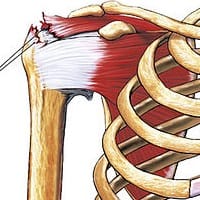
The rotator cuff is a group of four muscles and their tendons that stabilize the shoulder and allow for its wide range of motion. These muscles are:
- Supraspinatus
- Infraspinatus
- Teres minor
- Subscapularis
Types of Rotator Cuff Tears
- Partial Tear: This type of tear damages the tendon but does not completely sever it.
- Complete Tear: Also known as a full-thickness tear, this type involves the tendon being split into two pieces or pulled completely off the bone.
Causes
- Acute Injury: Sudden injuries, such as a fall on an outstretched arm or lifting something heavy with a jerking motion.
- Degenerative Wear and Tear: Gradual wear over time due to aging, repetitive stress from activities (like sports or certain jobs), or poor shoulder mechanics.
Symptoms
- Pain at rest and at night, particularly if lying on the affected shoulder
- Pain when lifting and lowering your arm or with specific movements
- Weakness in the shoulder
- Crackling sensation when moving the shoulder in certain positions
Importance of Physiotherapy in Rotator Cuff Tear Treatment
Physiotherapy plays a crucial role in the treatment and rehabilitation of rotator cuff tears. It can help in several ways, whether as a primary treatment for less severe tears or as a post-surgical rehabilitation strategy for more significant injuries. Here are some key points highlighting the importance of physiotherapy in rotator cuff tear treatment:
Pain Reduction
- Manual Therapy: Techniques such as massage and joint mobilization can help reduce pain and improve shoulder function.
- Modalities: Use of heat, ice, ultrasound, and electrical stimulation can help manage pain and inflammation.
Restoring Range of Motion
- Stretching Exercises: Specific stretches help maintain and gradually improve shoulder flexibility.
- Mobilization Techniques: Gentle mobilization can help increase the range of motion without causing further injury.
Strengthening Shoulder Muscles
- Strengthening Exercises: Focused on the rotator cuff and surrounding muscles, these exercises help restore strength and function to the shoulder.
- Progressive Resistance: Gradual increase in resistance helps to build muscle strength over time.
Improving Shoulder Stability
- Proprioceptive Training: Exercises that improve the body’s ability to sense the position and movement of the shoulder, enhancing stability.
- Functional Training: Exercises tailored to improve stability during daily activities and specific movements required in sports or work.
Enhancing Surgical Outcomes
- Pre-Surgical Physiotherapy (“Prehabilitation”): Strengthening and conditioning the shoulder before surgery can lead to better post-surgical outcomes.
- Post-Surgical Rehabilitation: Structured physiotherapy is essential to restore function, strength, and range of motion after surgery. It also helps minimize scar tissue formation and adhesions.
Preventing Further Injury
- Education: Teaching proper shoulder mechanics and ergonomic principles to avoid movements that can exacerbate the injury.
- Exercise Regimen: Developing a long-term exercise plan to maintain shoulder health and prevent future injuries.
Tailored Rehabilitation Programs
- Individualized Plans: Physiotherapists create personalized treatment plans based on the specific nature of the tear, the patient’s overall health, and their functional goals.
- Goal Setting: Setting realistic and progressive goals to keep the patient motivated and track progress.
Long-Term Shoulder Health
- Maintenance Exercises: Developing a routine of exercises to be continued even after formal physiotherapy ends to maintain shoulder health.
- Lifestyle Modifications: Advice on modifications to daily activities and sports techniques to protect the shoulder.
In summary, physiotherapy is an integral part of the comprehensive management of rotator cuff tears, offering a non-invasive approach to pain relief, functional restoration, and long-term shoulder health. It provides a structured and supportive environment for recovery, whether used alone or in conjunction with surgical treatments.
Click here to book an appointment with a physiotherapist at one of our eight locations.
- Physiotherapy Etobicoke – Triangle Physiotherapy Etobicoke
- Oakville Physiotherapy Clinic – Triangle Physiotherapy Oakville
- Physiotherapy North York – Triangle Physiotherapy North York
- Mississauga Physiotherapy Clinics – Triangle Physiotherapy Mississauga
- Downtown Physiotherapy Clinics – Triangle Physiotherapy King West
- Uptown Physiotherapy Clinics – Triangle Physiotherapy Lawrence Park
- Physiotherapy Clinic Downtown Toronto – Triangle Physiotherapy Queens Quay
- Physiotherapy Clinics Mississauga – Triangle Physiotherapy Erin Mills
“Rotator cuff tears require expert treatment and rehabilitation to restore function and reduce pain. Triangle Physiotherapy offers specialized care across the GTA. Whether you’re seeking Physiotherapy in Etobicoke, Oakville, North York, Toronto, Lawrence Park, Queens Quay, Erin Mills, Mississauga, or Liberty Village, our experienced team is here to help you on your recovery journey.”
The choice between physiotherapy and massage therapy depends on your specific needs, goals, and health conditions. Here’s a detailed comparison to help you decide which might be better for you:
Physiotherapy
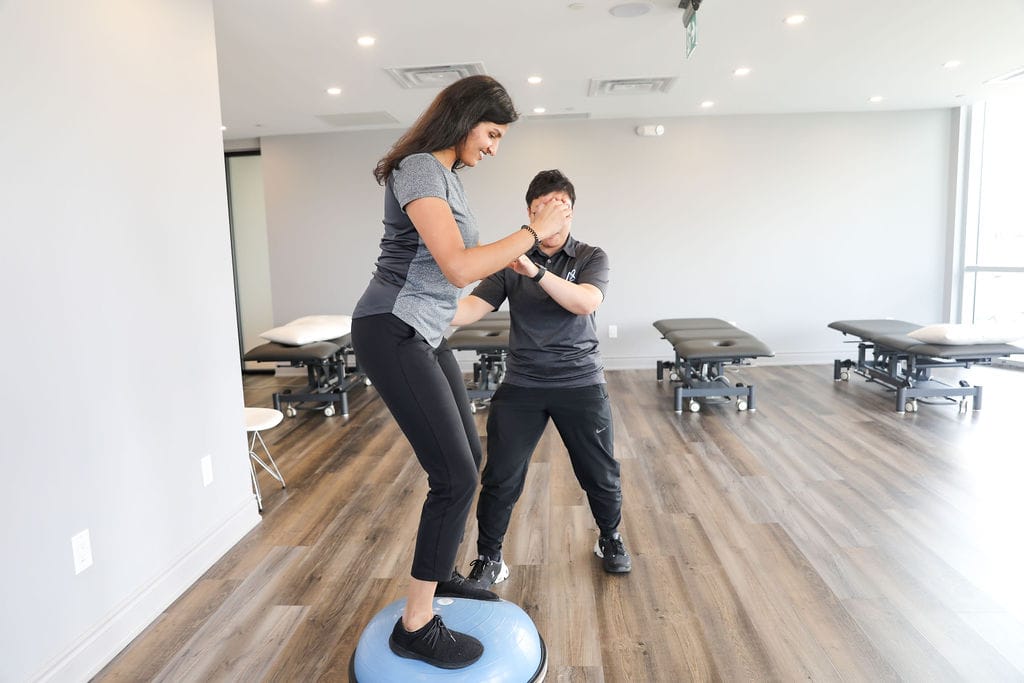
What it is:
- A healthcare profession focused on diagnosing, managing, and preventing movement disorders.
- Uses exercises, manual therapy, education, and modalities like ultrasound and electrical stimulation.
Benefits:
- Rehabilitation: Effective for recovering from injuries, surgeries, and chronic conditions like arthritis.
- Pain Management: Addresses the root cause of pain through various techniques and exercises.
- Improved Mobility: Helps restore function and movement, particularly after injury or surgery.
- Preventive Care: Offers strategies to prevent future injuries or manage chronic conditions.
- Customized Treatment: Tailors plans based on individual assessments and needs.
Common Conditions Treated:
- Musculoskeletal injuries (e.g., sprains, fractures)
- Neurological conditions (e.g., stroke, multiple sclerosis)
- Cardiopulmonary issues (e.g., chronic obstructive pulmonary disease)
- Post-surgical rehabilitation
Massage Therapy
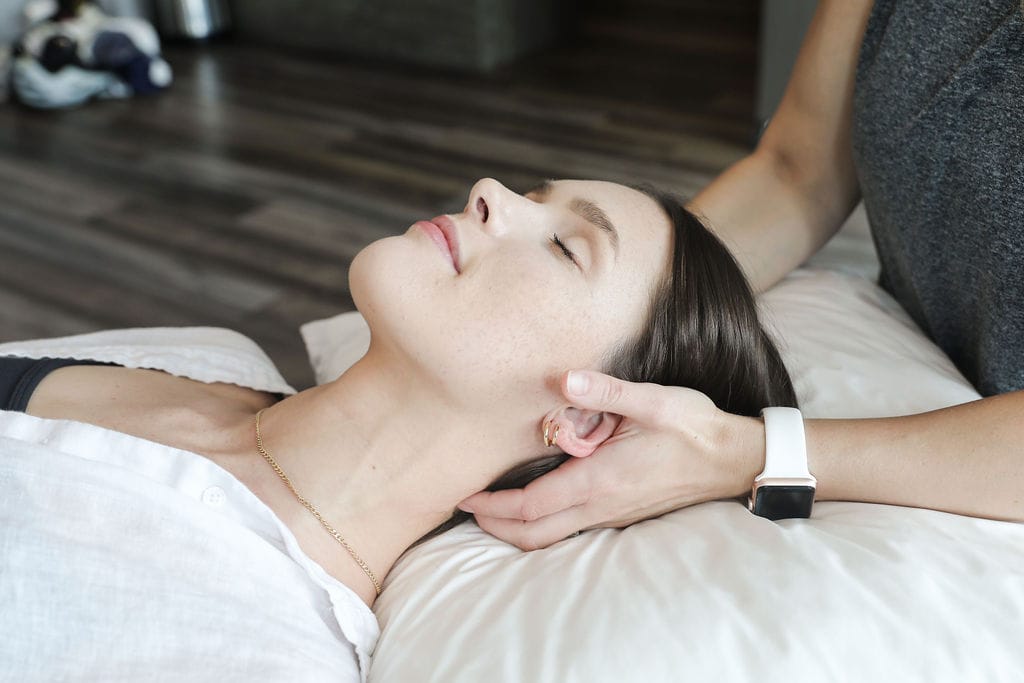
What it is:
- A practice involving the manipulation of soft tissues (muscles, tendons, ligaments) to enhance well-being.
- Uses techniques like stroking, kneading, and applying pressure.
Benefits:
- Relaxation: Promotes overall relaxation and stress relief.
- Pain Relief: Alleviates muscle tension and pain.
- Improved Circulation: Enhances blood flow, which can aid in healing.
- Flexibility: Increases range of motion and reduces stiffness.
- Mental Health: Can improve mood and reduce symptoms of anxiety and depression.
Common Conditions Treated:
- Muscle tension and soreness
- Stress-related conditions
- Chronic pain (e.g., back pain, fibromyalgia)
- Sports injuries
- Headaches and migraines
Which is Better for You?
- For Injury Rehabilitation or Chronic Conditions:
- Physiotherapy is typically more suitable as it provides a structured approach to recovery, addressing the underlying causes of your condition.
- For Stress Relief and Muscle Tension:
- Massage Therapy can be highly effective if your primary goal is relaxation and relief from muscle tightness.
- For Pain Management:
- Both can be effective, but the choice depends on the cause of the pain. Physiotherapy is often better for pain related to injury or chronic conditions, while massage therapy can be great for muscle-related pain.
- For Improved Mobility and Function:
- Physiotherapy focuses on restoring function and movement, making it the better choice for mobility issues.
- For Preventive Care:
- Physiotherapy provides long-term strategies to prevent injuries and manage chronic conditions.
- For Overall Well-being and Relaxation:
- Massage Therapy is beneficial for enhancing general well-being, reducing stress, and promoting relaxation.
Combination of Both:
- In some cases, a combination of physiotherapy and massage therapy can be beneficial. For example, physiotherapy can address the underlying issues, while massage therapy can help manage symptoms and improve overall well-being.
Conclusion:
Consult with a healthcare professional to get a personalized recommendation based on your specific health needs and goals. They can help you decide the best course of action and whether one or a combination of both therapies is ideal for you.
Click here to book an appointment with a physiotherapist and massage therapist at one of our eight locations.
- Physiotherapy Etobicoke – Triangle Physiotherapy Etobicoke
- Oakville Physiotherapy Clinic – Triangle Physiotherapy Oakville
- Physiotherapy North York – Triangle Physiotherapy North York
- Mississauga Physiotherapy Clinics – Triangle Physiotherapy Mississauga
- Downtown Physiotherapy Clinics – Triangle Physiotherapy King West
- Uptown Physiotherapy Clinics – Triangle Physiotherapy Lawrence Park
- Physiotherapy Clinic Downtown Toronto – Triangle Physiotherapy Queens Quay
- Physiotherapy Clinics Mississauga – Triangle Physiotherapy Erin Mills
Choosing between physiotherapy and massage therapy depends on your specific needs and health goals. Both can be beneficial for pain relief and overall wellness. For those looking for physiotherapy in Etobicoke, Oakville, North York, Toronto, Lawrence Park, Queens Quay, Erin Mills, Mississauga, or Liberty Village, there are skilled practitioners available to help you decide the best approach for your situation.
Physiotherapy can be highly beneficial for individuals suffering from knee osteoarthritis (OA) by addressing pain, improving function, and enhancing the overall quality of life.
What is Knee Osteoarthritis (OA)?
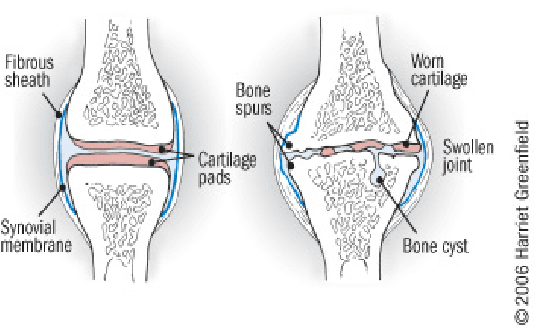
Knee OA is a degenerative joint disease that is typically a result of wear and tear and causes progressive loss of the articular cartilage of the joint.
What are the causes of Knee OA?
Knee osteoarthritis (OA) is a complex condition influenced by a variety of factors. Here are the primary causes and contributing factors:
1. Aging
- Natural Wear and Tear: As people age, the cartilage that cushions the knee joint gradually wears away, leading to OA.
- Decreased Ability to Heal: Older cartilage has a reduced ability to repair itself, making it more susceptible to damage.
2. Genetics
- Family History: Genetic predisposition can play a significant role. If OA runs in your family, you might be more likely to develop it.
- Genetic Mutations: Certain genetic mutations can affect cartilage production and maintenance.
3. Joint Injuries
- Previous Injuries: Injuries such as fractures, ligament tears, or meniscus damage can increase the risk of OA.
- Repetitive Stress Injuries: Repeated stress or overuse of the knee joint, often due to occupational or recreational activities, can lead to OA.
4. Obesity
- Increased Joint Load: Excess body weight puts additional stress on the knee joints, accelerating cartilage breakdown.
- Inflammation: Fat tissue produces inflammatory chemicals that can contribute to joint damage.
5. Mechanical Factors
- Joint Alignment: Abnormal joint alignment, such as bowlegs or knock-knees, can increase stress on certain parts of the knee.
- Muscle Weakness: Weak muscles around the knee, particularly the quadriceps, can lead to increased joint stress.
6. Gender
- Higher Risk in Women: Women, especially those over 50, are more likely to develop knee OA compared to men. Hormonal differences might contribute to this increased risk.
7. Metabolic and Systemic Factors
- Metabolic Syndrome: Conditions like diabetes and metabolic syndrome are associated with an increased risk of OA due to systemic inflammation and metabolic disturbances.
- Inflammatory Diseases: Conditions such as rheumatoid arthritis can predispose individuals to secondary OA.
8. Lifestyle Factors
- Physical Activity: Both excessive and insufficient physical activity can affect joint health. High-impact sports can lead to joint injuries, while sedentary lifestyles can weaken muscles and joints.
- Diet: Poor nutrition can affect joint health. For example, deficiencies in vitamins D and C can impair cartilage maintenance and repair.
9. Joint Biomechanics
- Meniscus Tears: Damage to the meniscus can disrupt joint mechanics and contribute to OA.
- Ligament Damage: Injuries to ligaments, such as the ACL, can destabilize the knee and lead to abnormal wear patterns.
10. Inflammation
- Low-Grade Inflammation: Chronic low-grade inflammation can contribute to the breakdown of cartilage and other joint tissues.
Understanding these causes and contributing factors can help in the prevention and management of knee osteoarthritis, emphasizing the importance of maintaining a healthy lifestyle, avoiding joint injuries, and seeking early intervention for symptoms.
What are the most common symptoms of Knee OA?
Knee osteoarthritis (OA) typically presents with a range of symptoms that can vary in intensity from mild to severe. The most common symptoms include:
1. Pain
- Activity-Related Pain: Pain that worsens with activity or weight-bearing and improves with rest.
- Persistent Pain: Chronic pain that may be present even at rest or during the night in more advanced stages.
2. Stiffness
- Morning Stiffness: Stiffness in the knee that is usually worse in the morning or after periods of inactivity and typically lasts less than 30 minutes.
- Post-Activity Stiffness: Stiffness that occurs after prolonged sitting or resting.
3. Swelling
- Joint Swelling: Swelling around the knee joint due to inflammation or increased production of joint fluid.
- Effusion: Accumulation of excess fluid within the knee joint, leading to noticeable swelling.
4. Reduced Range of Motion
- Limited Flexibility: Difficulty bending or straightening the knee fully.
- Loss of Motion: Progressive decrease in the knee’s range of motion over time.
5. Grinding Sensation (Crepitus)
- Audible Cracking or Popping: A sensation of grinding, cracking, or popping sounds when moving the knee, often due to roughened cartilage surfaces.
6. Weakness or Instability
- Feeling of Giving Way: A sensation that the knee might buckle or give out, often due to muscle weakness or joint instability.
- Muscle Weakness: Weakness in the muscles surrounding the knee, particularly the quadriceps.
7. Deformity
- Joint Deformities: Changes in the shape of the knee joint, such as bowlegged (varus) or knock-kneed (valgus) appearance, due to uneven wear and joint damage.
8. Tenderness
- Joint Tenderness: Tenderness or pain when pressing on or around the knee joint.
9. Functional Impairment
- Difficulty with Activities: Challenges with everyday activities such as walking, climbing stairs, sitting, or standing due to pain and stiffness.
- Reduced Mobility: Decreased ability to perform normal daily activities and exercise.
10. Fatigue
- General Fatigue: Feeling of tiredness and reduced energy levels, often due to chronic pain and sleep disturbances.
These symptoms can significantly impact an individual’s quality of life and ability to perform daily activities. Early recognition and management of knee OA symptoms can help slow disease progression and improve function and comfort.
What are the treatment options for Knee OA?
The number 1 treatment option is conservative management (ie. Patient education, therapeutic exercise, activity modification, weight loss, bracing), surgery should be considered after a conservative approach (talk to your orthopaedic specialist for more information).
Physiotherapy can help by providing you with education about osteoarthritis, tailor an exercise program that is suitable for you, help you consider the best options for activity modifications, provide you with education on bracing, address psychosocial factors such as fear-avoidance, promote patient autonomy and get you back to doing the things you love to do!
Manual therapy- joint mobilization to help with stiffness. Muscle energy technique to help stretch surrounding muscles.
Modalities – heat/ice for pain relief, TENs/IFC for pain relief and inflammation control. Ultrasound for pain relief.
Exercises – help with improving mobility, ROM, strength, balance, aerobic capacity, promoting physical function, reducing knee pain and inflammation.
Click here to book an appointment with a physiotherapist at one of our eight locations.
- Physiotherapy Etobicoke – Triangle Physiotherapy Etobicoke
- Oakville Physiotherapy Clinic – Triangle Physiotherapy Oakville
- Physiotherapy North York – Triangle Physiotherapy North York
- Mississauga Physiotherapy Clinics – Triangle Physiotherapy Mississauga
- Downtown Physiotherapy Clinics – Triangle Physiotherapy King West
- Uptown Physiotherapy Clinics – Triangle Physiotherapy Lawrence Park
- Physiotherapy Clinic Downtown Toronto – Triangle Physiotherapy Queens Quay
- Physiotherapy Clinics Mississauga – Triangle Physiotherapy Erin Mills
Physiotherapy can be a highly effective treatment for managing knee osteoarthritis by improving mobility, reducing pain, and enhancing overall function. Whether you are looking for physiotherapy in Etobicoke, Oakville, North York, Toronto, Lawrence Park, Queens Quay, Erin Mills, Mississauga, or Liberty Village, there are experienced physiotherapists ready to help you manage osteoarthritis and improve your quality of life.

